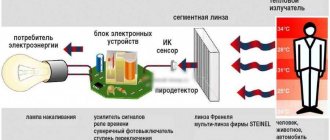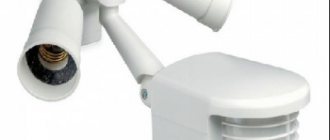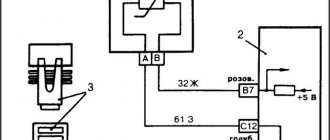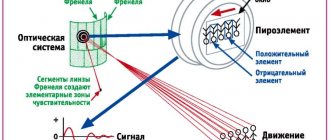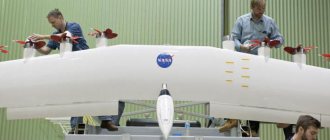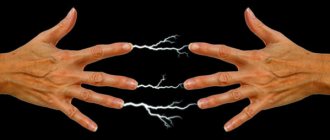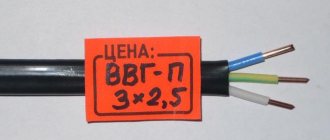A movement sensor is a device that signals the movement of objects in its field of action. It provides control over the observed area and the launch of certain automatic scenarios when triggered - for example, a motion sensor to turn on the light. Such sensors are very common in the field of security, home and business automation, and their use is growing every year. They are found both operating in an independent mode and as part of software and hardware systems.
Types of sensors
Any motion sensor functions by analyzing certain waves received from the outside (radio, sound, thermal and others). According to the principles of operation, devices are divided into:
- ultrasonic;
- infrared motion sensors;
- light (photoelectric);
- tomographic (on radio waves);
- microwave, using microwave radiation.
Gadgets can either simply perceive incoming waves, or generate them themselves and analyze the reflected ones. According to this principle, they are divided into active, passive and combined devices. A combined motion sensor usually has a combined design with separate emitting and receiving modules.
The most common varieties:
- PIR sensors (passive infrared). This is the simplest and most inexpensive option on the market today. They make up about half of the total mass of motion sensors;
- active - tomographic type, microwave motion sensor or ultrasonic;
- combinations of IR and photoelectric.
Manufacturers prefer to combine different types of sensors in one model. This is due to the inevitable errors and false alarms for this class of devices. To increase accuracy and reduce the chances of a “false alarm,” developers combine several technologies (for example, IR and ultrasound) in a single package. This reduces the percentage of fake reactions, but in return sometimes reduces the sensitivity characteristics. Such coarsening can lead to failure to respond to real movement that should be registered.
Depending on the mounting location, the sensors are:
- ceiling;
- wall-mounted
Levels of protection
Depending on the location of installation, devices are divided into external ones, for outdoor installation, and internal ones, for indoor use.
Suitability for certain conditions is determined by the IP protection category. To make the right choice, it is important to understand what the IP degree of security is.
The values of this characteristic are coded with two numbers: the first indicates the degree of protection from dust and other solid objects, the second indicates protection from moisture. For example, the IP20 marking indicates suitability for installation in residential premises and offices. There is no protection from moisture, and the case protects components from objects larger than 12.5 mm. Such a device cannot be installed in the bathroom.
IP44 - more serious protection:
- the housing protects against particles larger than 1 mm;
- protection from splashing water is ensured.
This option is better suited for bathrooms, kitchens, garages and other damp and dirty places. The maximum IP degree in this class of equipment is 65. This is an outdoor option; such devices are capable of operating outdoors at any time of the year, are not afraid of short-term exposure to direct jets of water, and are protected from dust and temperature changes. They are often used as outdoor motion sensors for lighting.
Criterias of choice
In order not to make a mistake in choosing a sensor for automatically turning on lighting devices, you will need to delve a little into the technology of their operation and know exactly the following:
Application area
Application area. It is necessary to decide in advance and choose where and how the device will be mounted (outdoors or indoors), since there are moisture- and dust-proof options; as well as different mounting methods: mounted, built-in or on brackets. The power of the lighting device to which the connection will be made.
There are sensors on the market with operating voltages of 200 W and higher. For example, a street spotlight will require an expensive element with a maximum coverage angle of the scanned area (180 - 360 degrees), and in the entrance, on the stairs, you can install the most economical option. It is especially important to pay attention to the power if you plan to combine the device with a fluorescent or energy-saving lamp. Before purchasing, the total load must be calculated. If it exceeds the load specified in the instructions, you will need to install an intermediate relay or distribute the load between two devices.
Viewing angle
Viewing angle. The parameter varies in the range from 20 degrees (such devices are mainly used to record entry/exit events) to 360 degrees (scan the area around within a given radius).
Lamp type
Lamp type. It is acceptable to use sensors with almost any lamps (LED, incandescent, halogen, energy-saving, etc.) and lighting devices. Manufacturers even offer sockets and switches with built-in motion sensors, which are convenient to use at home or in the office.
Lighting range
Radius of action. Characterizes the maximum distance of an object from the device at which a moving object can be detected. For infrared sensors, this radius is about 12 meters, which is quite enough for most living spaces and corridors.
Two-pole or three-pole
Two-pole or three-pole. Bipolar sensors are used only in combination with incandescent lamps. They are connected in series. Three-pole models are more versatile and can be used with any type of lamp.
We also recommend that you familiarize yourself in more detail with the operating principle of LED lamps.
Motion sensors
Photo of LED floodlight with motion sensor
The detection zone cannot cover the entire room, so to plan it correctly, you need to determine a place with the specified visibility parameters and install the device at the height recommended by the manufacturer.
Motion sensor: how it works
Any device in the family under consideration reacts to movement. Let's look at how different types of motion sensors work.
Infrared
Its principle of operation is to analyze the heat entering the working surface. PIR varieties do not generate it themselves, but only register the incoming one.
The infrared device structurally contains two heat-sensitive elements. To ensure proper focusing of the beams, a Fresnel lens is placed in front of each module. The operating principle of a typical PIR device is as follows:
- lenses direct radiation to “their” working module;
- in the absence of movement in the visibility zone, each of them receives approximately the same amount of heat;
- When a thermal object appears, IR rays pass through the lenses to one part of the thermal sensor. The readings between it and the second part begin to differ, and the device “understands” that someone has passed by it.
Of course, the scheme using two lenses is very simple and crude, although it is suitable, for example, for turning on lighting via a sensor in simple cases. Therefore, in reality, each device is equipped with several dozen lenses. Externally, such a module looks like the faceted eye of a dragonfly and is displayed on the body in the form of a cellular window that hides heat-sensitive components.
Pyroelectric elements are mainly used as the latter. Less common are semiconductor versions and microbolometers with thermocouples.
Ultrasonic sensors
These devices analyze the ultrasonic spectrum, which is not perceptible to human hearing. The principle of operation of the motion sensor is as follows:
- a built-in ultrasound generator emits beams of acoustic waves at certain intervals;
- After that, it switches to reception and measures the reflected sound.
If the pattern of the reflected ultrasonic “echo” does not change, there is no movement in the coverage area. When it appears, the Doppler effect distorts the echo and the operating device understands that the situation has changed. If the registered change exceeds the threshold set in the settings, the sensor will be triggered.
The generating ultrasonic unit is usually a quartz or ceramic piezoelectric element; there are samples with a membrane vibrating in an electrostatic field.
Radio wave
The principle of operation of this type of motion sensor is similar to the operation of ultrasonic ones, but it is not the reflected sound that is measured, but the radio signal.
The advantages of radio sensors are their ability to work with areas beyond line of sight. Radio waves are able to overcome non-metallic obstacles such as walls, and such devices can be used to monitor rooms and objects hidden behind obstacles. But a device that responds to radio radiation is expensive, so these devices (like microwave devices) are rarely used in home automation systems, although they have found application in surveillance systems for large commercial areas - workshops, warehouses, and so on.
Photovoltaic
As the name suggests, they respond to light. Their operating principle is to interrupt the beam of incident light. If the device is shaded, it is triggered.
The technical design of a motion sensor of this type is simple; such devices are structurally composed of two parts:
- emitting light waves;
- host.
The latter contains a module for generating current under the influence of radiation. If the flow is blocked, the device will work.
The simplest example of the use of photosensors is in the metro: thanks to them, metro turnstiles work. If a passenger tries to cross the turnstile without paying, the sensor reacts and closes the passage.
Scope of application
Automatic lighting control: in everyday life, today most often the simplest motion sensors are used to control the illumination of a certain living space or territory. They are recommended to be used to control lighting in garages, basements, entrances of houses, local areas, and street lamps.
It is recommended to use where a person’s hands are often busy or it is inconvenient to look for a switch, as well as in all places where round-the-clock lighting is not required. This is where automation comes to the rescue. A simple automatic sensor makes the decision to turn on/off the lighting device connected to it at the right time and in the right place.
Security alarm: the use of the device is also justified as an element of a security alarm. A correctly configured and installed sensor will detect a security line violator at a distance of approximately 12 meters, and then the warning system (siren, lighting), and possibly photo and video recording devices for the violation, will be activated. This is especially useful when protecting garages, country houses, parking lots, warehouse doors, etc.
Modern security systems, for example, based on microcontrollers such as ARDUINO, can even send you an SMS message about the fact that the device has been activated at a protected facility. This will significantly increase the chances of property safety and scare away potential intruders. So, a watchman will come to the sound and check the object, and an SMS message in the form of a call to a mobile phone will be an additional guarantee of this.
Various automated control systems (ACS): various motion sensors are also used in production. Such devices operate on conveyors, elevators, scales and their task is to ensure the technological production process, and in case of emergency, turn off the equipment.
Peculiarities
The motion sensor is almost never used “by itself”. In offline mode, it simply detects the occurrence of changes in the controlled area, so it must transmit information about this to related devices or software. And they, in turn, will perform user-specified actions:
- turn on street or interior lighting;
- trigger an alarm;
- send alerts and notifications;
- activate this or that equipment;
- change the parameters of climate control systems and other associated devices.
For example, security motion sensors are almost always included in complex remote control security systems. During installation, specialists configure the connection of the components, and the latter interact through a controller provided and configured by the service provider (private or private security). And the sensor for turning on the light, for example, controls the lighting through the central unit.
If the user is a self-installer and purchases system components separately, he must also purchase, install and configure the appropriate central controller. As a rule, along with this, its supplier provides clients with access to a special cloud service, where connections between components and scenarios for their interaction are configured. This approach is followed, for example, by Xiaomi in its “smart home” ecosystem.
Directional pattern
Proper installation and orientation is critical to ensure maximum performance of the instrument. It was stated above that there is a ceiling and wall installation option; This division in itself does not mean that the ceiling sensor cannot be installed on the wall, or vice versa, but efficiency and accuracy may be reduced.
In addition, before choosing a specific model, you should evaluate the geometry of the space where the gadget will be used and clearly define the planned viewing area. If this is neglected, the device after installation may not “see” movement in the area desired by the owner.
To determine, you should measure the desired viewing angle and the distance at which clear motion detection will be required. Many sensors are equipped with a directional pattern that helps in correct orientation of the device:
Here:
- light area - general viewing area;
- the white dotted line is the area of confident detection.
Checking, setting and adjusting
To check the correct connection, a temporary circuit is used; you need to connect it following the instructions in the technical data sheet of the product. If the device does not work, it means that errors were made during installation.
Complex devices can be tested as follows:
- assemble a temporary connection diagram;
- set the light control to maximum;
- set the timer to minimum.
If the LED indicator lights up when the object moves, the device is working. Instead of an indicator, a relay can be installed that will start clicking when motion is detected.
After installing the sensor, it must be adjusted. The timer operation time can be set from a few seconds to a quarter of an hour. Adjusting the sensitivity of the sensor is a complex process, the main task of which is to prevent the device from triggering the appearance of pets.
Where is it used?
As already mentioned, the main area of application of motion sensors is home automation, the creation of control and surveillance systems in buildings, and security. Using such sensors you can organize:
- automated lighting through motion sensors to turn on the lights and corresponding controllers/switches;
- control of the climate system by triggers;
- recognition of unauthorized access to premises, and so on.
Devices like these help you save money. Thus, their inclusion in a complex of automatic control of light and air conditioning reduces a company’s or homeowner’s costs for light by 70%, and energy consumption by up to 40%.
Motion sensors are used in:
- aircraft industry;
- defense industry;
- development;
- automotive industry;
- development of consumer electronics, and so on.
Use in security
If such a sensor is included in the remote control complex, when motion is detected, it will turn on the siren and also send an alarm to the dispatcher's console. Having received it, the security organization will be able to send a rapid response team to the site.
If the device operates as part of home security, smart home and similar systems, it will be able to send a notification to the owner via SMS, email or other means. Some solutions can even make calls to one or more “trusted” phone numbers.
We recommend reading: ACS system - what it is, how it helps to increase the security of an object when many people have access to it.
Other possible sensor functions include:
- turning on video surveillance;
- locking the locks on the premises;
- blackout of equipment;
- turning on (or, conversely, turning off) the light;
- any other function that can be implemented by a specific set of hardware and software.
Lighting automation
The sensor can be intended for a street or indoor lighting system. Depending on the location, it is capable of giving commands to turn off the light and turn it on, as well as change the level and color of illumination (with or without a delay).
In general, the sensor sends a signal to the lighting controller, which performs further actions according to the scripts and programs embedded in it, activates switches, and so on. But there are also switches with already built-in sensitive components. They are often used as street motion sensors to turn on lights. And if you add a light sensor to the system, you can further save energy, since the light will not turn on during the day, when it is already light.
Solutions for controlling “smart lamps” and RGB LED strips are common.
Climate systems
Appropriately configured climate control changes power, temperature and other parameters based on a sensor signal. For this:
- the sensor transmits information to the controller about the detected movement (as well as its termination);
- the central unit launches a sequence of commands, including climate control, turning it off or changing modes.
For example, if a signal is received from a room sensor in cold weather, the controller will order the heating thermostats to increase heat to quickly create comfortable conditions. And if there is no movement in the operating area in the summer, the device will force the air conditioner to reduce power.
How to properly connect a switch
Connecting motion sensors is not technically a difficult job, but it is specific and requires experience and special knowledge. It is preferable to turn to specialists for such a service. If installed incorrectly, false alarms or blocking may occur.
Key points to consider during installation:
- providing a detection zone;
- protection from external factors that can cause false alarms or blocking of operation;
- connection to electrical wiring.
Install it yourself
Motion sensors are connected using a terminal. Usually the terminals have 3 pins, less often – 4.
Terminal marking:
- L – phase (for brown or red wires);
- N – zero (blue wire);
- L with a stroke or arrow, or the letter A - for a lighting fixture;
- PE – protective grounding.
The colors of the wires may differ from the standard, so the most reliable way is to determine the phase or zero using an indicator.
Connection diagrams
There are several basic schemes for connecting sensors to lighting:
- sequential;
- parallel;
- for several motion sensors;
- using a magnetic starter.
With a serial connection, lighting control is completely transferred to the motion sensor.
In cases where it is necessary to turn on the light for a long time, and the object will not be in the sensor detection zone, a switch is installed parallel to the sensor. An example of such a need would be the use of a motion sensor in a garage with an inspection pit.
While in a hole, or doing repairs under a car, a person still needs lighting, but his movements are not captured by the device. After finishing work, you need to manually turn off the light with a switch , but it will turn on again thanks to the motion sensor and turn off after the object leaves the detection zone.
In long or large rooms there is a need to install several motion sensors and connect them to lighting. Under these conditions, the sensors are connected in parallel and from one phase. The activation of one of the sensors closes the circuit and turns on the lighting in the entire corridor.
The use of a magnetic starter is mandatory when connecting several powerful lamps or additional electrical equipment to the motion sensor.
Connection diagram to an energy-saving lamp
Connection diagram to the lamp
Checking and setting after installation
Motion sensors designed to turn on lighting fixtures have the following set of adjustable parameters:
- LUX – illumination indoors or outdoors, at which the sensor starts to operate to turn on the lighting fixtures. When installing, set it to maximum.
- TIME – the time that the device continues to illuminate after the moving object has left the detection zone. Usually set to 10 seconds or higher if the corridor is long enough or the door is opened with keys behind a partition outside the detection zone of the sensor.
- SENS – device sensitivity, a parameter that affects the motion detection range. Initially set to maximum. It may be necessary if interference motion enters the detection zone, and reinstalling the sensor is difficult. An example would be the turning on of the light on the landing due to a moving elevator car or flickering branches outside the window.
- MIC – If your sensor has a noise setting, set it to minimum to avoid false alarms from a child screaming or a neighbor's dog barking.
Where to buy sensors
You can purchase motion sensors either in a specialized store or online in an online store. In the second case, the budget option for purchasing products on the Aliexpress website deserves special attention. For some lamps there is an option for shipment from a warehouse in the Russian Federation; they can be received as quickly as possible; to do this, when ordering, select “Delivery from the Russian Federation”
| Infrared motion sensor | KERUI motion sensor | Aqara motion sensor for Xiaomi |
| Motion detector for home alarm | Motion sensor SONOFF SNZB-03 | Microwave Radar Motion Sensor |
Connection diagrams
To solve various problems, motion sensors are connected using various schemes. The simplest option is to directly turn on the lighting fixture, as shown in the figure below.
Rice. 6. Motion sensor connection diagram
If you allow the possibility of switching lighting equipment bypassing the motion sensor for personal needs, then it is better to use a circuit with a bypass function:
Rice. 7. Circuit with bypass switch
As you can see, here the key switch allows you to turn on the lighting even without a signal from the sensor. For those cases when the motion sensor should be triggered only in the dark, a circuit with a photo relay is used:
Rice. 8. Circuit with photo relay
If you want the lighting equipment to be turned on by movement in several zones, then use a diagram for connecting one lamp to two or more sensors:
Rice. 9. Scheme with two motion sensors
Infrared
The most common, cheap and easy to use devices. The principle of their operation is based on the perception of changes in the thermal background, in a controlled room, by pyroelectric sensors. IR detectors that detect movement using an optical system called a Fresnel lens. When a warm object moves, the lens focuses IR radiation on different parts of the pyroelectric sensor.
Active IR sensors operate on a different principle. They consist of two devices that have both receiving and generating IR rays. An object located between them changes the temperature of the incoming beam, which triggers an alarm. Such devices are usually used to protect perimeters.
